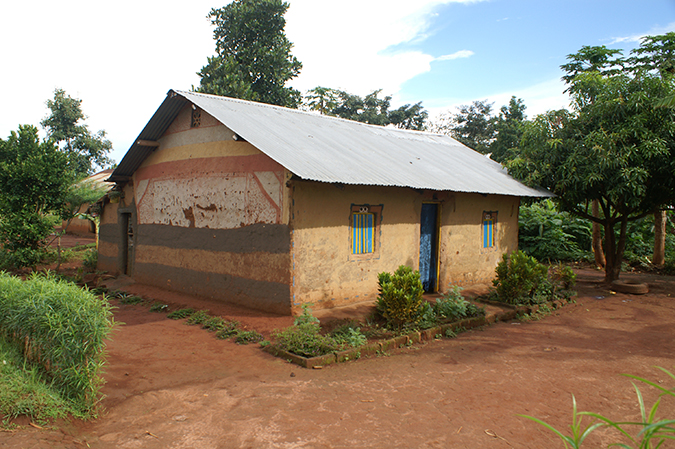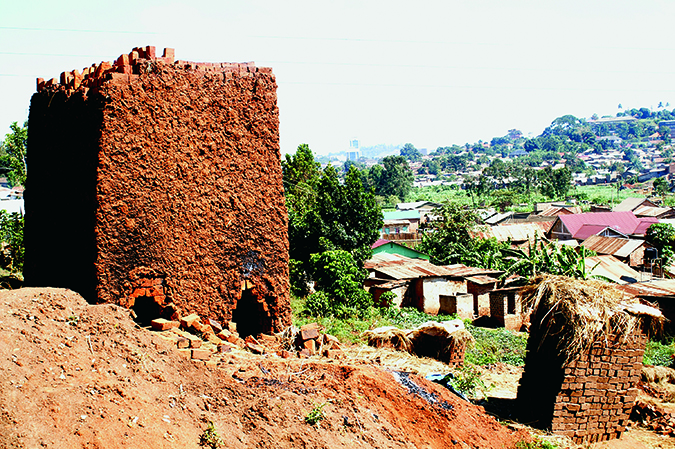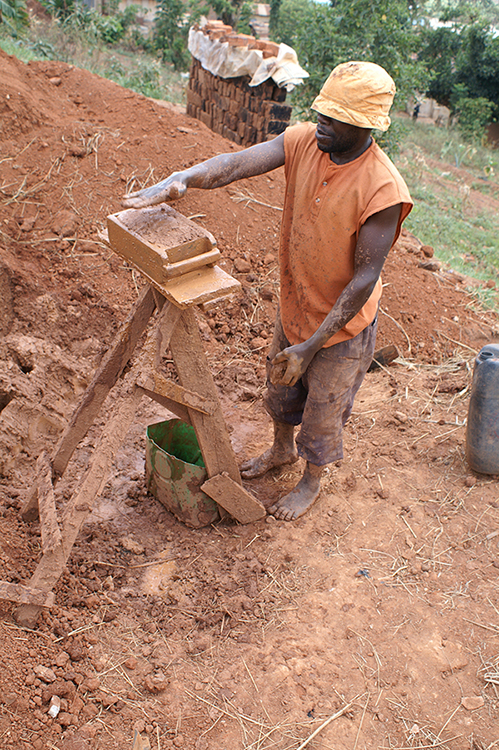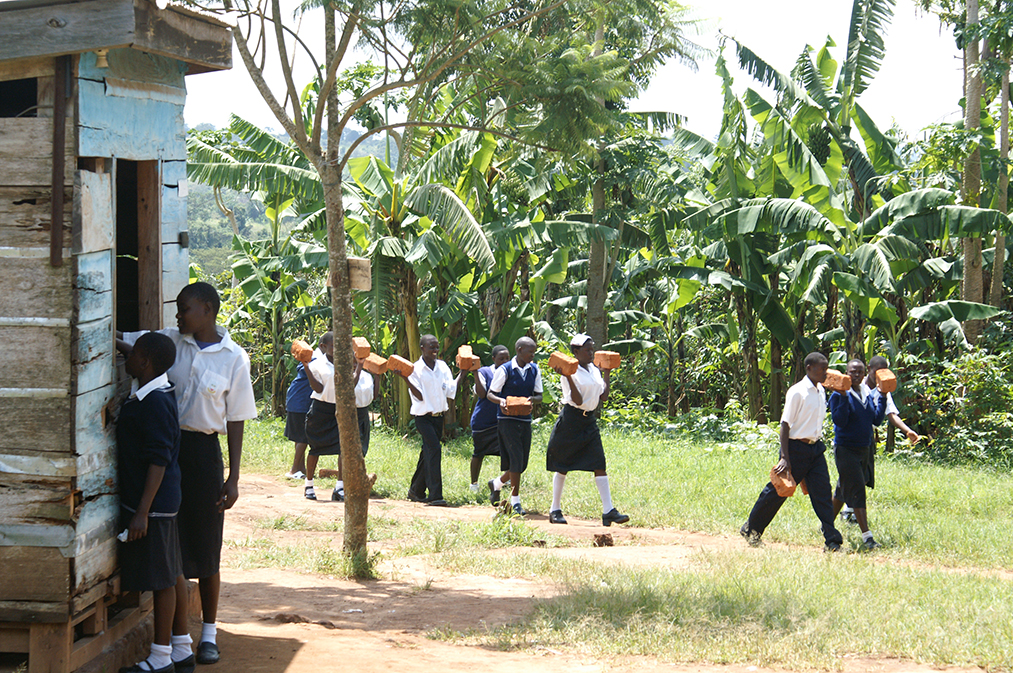David Stairs
On Christmas Day one year we visited our friend Kasule Kizito, who was staying at his home in Masaka. We traveled to Bukalavu taxi stage by matatu, where Kizito met us and took us to his home. Kizito was then attempting to repurchase land subdivided from his grandfather’s estate by his 70-odd descendents. On December 26th Kizito broke ground on the new brick house he was building for his eighty-year-old mother.

Stucco-covered brick house with corrugated steel roof
Kizito’s mother had lived in the same mud and wattle house, with polished earth floors, a mansion at six rooms, for over fifty years. Techniques of building have changed over the years in Uganda. Rammed-earth thatch-roofed construction traditions, once the norm in many parts of the country, have given way to more modern techniques. The preferred approach for a modern middle-class dwelling in Uganda is to pour a slab concrete foundation, then raise brick and cement-trowelled walls. Roofs can be made of traditional thatch, but are more likely to be either corrugated steel or polychromed lapped aluminum.

Kilns are often fired in populous areas
Whether in the city or in rural districts, the only thing that varies in house construction is whether a utility package is installed. Rural homes are more likely to have drop toilets outside the dwelling, city homes to include running water and electric points. Generally, rural construction can also take longer to complete, with people inhabiting partly-finished spaces while accumulating the funds needed to finish the house step-by-step. Rural projects are also less likely to invoke the elaborate security precautions people take in town.

Bricks are often molded one at a time
In all cases, construction depends on the production of clay bricks. These are dependent upon a ready supply of clay, and wherever this is found manufacturing springs up. Brick production operations can be either rural or urban, as there are no limitations on kiln firing in urban areas. Bricks are molded one-by-one, then laid out to dry before being built into large self-firing kilns. Later, the finished bricks might be invitingly stacked at the roadside, an inducement to quick sale. Since urban growth continues unabated, especially in Kampala, there is always a demand for building materials.

An urban brickyard
Building is often a communal undertaking. When a friend’s secondary school was destroyed in the Ugandan civil war in the ’80’s, everyone pulled to rebuild: teachers, parents, and students. On the day I visited, each student took a brick or two and carried them from the kiln to the building site. In this way, the need for heavy equipment is eliminated, and a sense of community is engendered.

School kids moving bricks on lunch hour
About two weeks after visiting Kizito’s construction project, he and I attended the funeral for a friend’s mother. When I asked him if he’d been thinking that he still had to endure the ordeal of burying his own Mother he said he worried about whether she would get any use out of the house he was building for her. “At least Bruno’s Mother had seven years in the house he built her. It was good he acted when he did,” he said. Happily, a few years later I learned that Kizito’s Mother’s house had been finished and, indeed, she was living in it, enjoying every moment.
David Stairs is the founding editor of the Design-Altruism-Project










